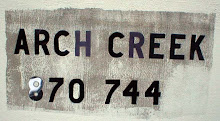I was shocked that a person of such prominence, who no doubt enjoyed "gold-plated" medical care (to quote George Bush), should suddenly pass away from a heart attack at his age. Story here.
Mr. Russert’s fate underlines some painful truths. A doctor’s care is not a protective bubble, and cardiology is not the exact science that many people wish it to be. A person’s risk of a heart attack can only be estimated, and although drugs, diet and exercise may lower that risk, they cannot eliminate it entirely. True, the death rate from heart disease has declined, but it is still the leading cause of death in the United States, killing 650,000 people a year. About 300,000 die suddenly, and about half, like Mr. Russert, have no symptoms. . . .
What killed Mr. Russert was a plaque rupture. A fatty, pimplelike lesion in a coronary artery burst, and a blood clot formed that closed the vessel and cut off circulation to part of the heart muscle. It was a typical heart attack, or myocardial infarction, an event that occurs 1.2 million times a year in the United States, killing 456,000 people.
In Mr. Russert’s case, the heart attack led to a second catastrophe, an abnormal heart rhythm that caused cardiac arrest and quickly killed him. An electric shock from a defibrillator might have restarted his heart if it had been given promptly when he collapsed at his desk. But it was apparently delayed. . . .
Mr. Russert’s heart disease was a mixed picture. Some factors looked favorable. There was no family history of heart attacks. Though he had high blood pressure, drugs lowered it pretty well, said his internist, Dr. Michael A. Newman. His total cholesterol was not high, nor was his LDL, the bad type of cholesterol, or his C-reactive protein, a measure of inflammation that is thought to contribute to plaque rupture. He did not smoke. At his last physical, in April, he passed a stress test, and his heart function was good. Dr. Newman estimated his risk of a heart attack in the next 10 years at 5 percent, based on a widely used calculator.
On the negative side, Mr. Russert had low HDL, the protective cholesterol, and high triglycerides. He was quite overweight; a waist more than 40 inches in men increases heart risk. A CT scan of his coronary arteries in 1998 gave a calcium score of 210, indicating artery disease — healthy arteries do not have calcium deposits — and a moderate to high risk of a heart attack. An echocardiogram in April found that the main heart pumping chamber had thickened, his ability to exercise had decreased slightly, and his blood pressure had increased a bit. Dr. Newman and his cardiologist, Dr. George Bren, changed his blood pressure medicines, and the pressure lowered to 120/80, Dr. Newman said. . . .
An autopsy found, in addition to the plaque rupture, extensive disease in Mr. Russert’s coronary arteries, enough to surprise his doctors, they said. Had they found it before, Dr Newman said, a bypass would have been recommended. Dr. Bren differed, saying many cardiologists would still not have advised surgery. . . .
“You want to be sure your blood pressure and lipids are controlled, that you’re not smoking, and you have the right waist circumference,” Dr. Smith said. . . .

No comments:
Post a Comment